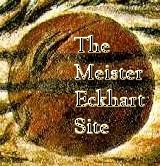|
|
||
 |
Meister Eckhart Home / Works by Meister Eckhart - Quotes / Inspired by Eckhart / Studies / The Papal Condemnation / Mail & Announcements / Links / Books |
M. LAISTNER
Knowledge of Greek in Western Europe during the earlier Middle Ages
Chapter 10 (The Study of Greek) of Laistner's, Thought & Letters in Western Europe - A.D. 500 to 900, N.Y. 1931, pp. 238-250
Page 6
Christian of Stavelot's occupation with Greek appears to have been entirely in the interests of Biblical exegesis and of a better understanding of the Bible by comparing the Greek with the Latin version.[15] A similar use of Greek for theological ends occurs in a letter penned by an unidentified Irishman about the middle of the ninth century. He is concerned with the translation and textual criticism of the Psalter and quotes a number of passages from it in Greek. He also appends brief explanations of the critical signs, five in number, that were found in ancient manuscripts of the Psalms. He makes use of earlier authorities, particularly Jerome, but there can be no doubt that his comparisons of the two languages are based on some personal knowledge.[16]
Peculiar interest attaches to two translations made in the ninth century of an unusually difficult Greek author. It was probably near the end of the fifth century of our era that an unknown writer, possibly of Syrian origin, composed four treatises and ten letters, in which he strove to build up a system of Christian mysticism to combat that of the Neoplatonists. He was himself deeply imbued with Neoplatonic doctrines and in fact relied heavily on the last of the Neoplatonists, Proclus, from whose writings he sometimes copied verbally. He called himself Dionysius, claimed to be a pupil of St Paul, and in his works introduced by name sundry persons who flourished in the first century after Christ, thereby trying to strengthen the impression that his books were genuine products of the sub-Apostolic Age. He was more successful in making posterity believe this unabashed fiction than he had perhaps dared to hope. As early as the sixth century his identity with Dionysius the Areopagite (Acts xvii, 34) was generally assumed in the East, although Hypatius of Ephesus in 533 openly declared the works a forgery. In the West, too, they were accepted as genuine from the first, and in spite of the doubts expressed by Laurentius Valla and Erasmus, their authenticity remained virtually unquestioned until the seventeenth century.